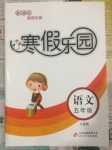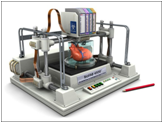题目内容
16.We have made _______great progress in the medical field,but ______ progress we have made is not enough.( )| A. | a; a | B. | a; the | C. | /; the | D. | /;/ |
分析 我们已经在医学领域取得巨大进步,但我们取得的这些进步还不够.
解答 答案选C.第一空为固定搭配,make great progress,意为"取得巨大进步".第二空为特指,指代我们所取得的这些进步,由其后的"we have made"修饰,故用定冠词the.
点评 熟记常见搭配,make progress中不用冠词.

练习册系列答案
 寒假乐园北京教育出版社系列答案
寒假乐园北京教育出版社系列答案
相关题目
11.The UN helps protect human rights and works _____ international laws.( )
| A. | improve | B. | to improve | C. | improving | D. | improved |
1.They have a lot ______ and become good friends.( )
| A. | in common | B. | in particular | C. | in practice | D. | in need |
8.Helen has______ 16-year-old son named Jerry who has ____ gift for singing and hosting in parties.( )
| A. | a; the | B. | a; a | C. | the; a | D. | the; the |
7.SELF-REFLECTION OF TEACHING PRACTICES READING,WRITING,TALKING
Please do not sign your name.Mark the responses that most nearly reflect your teaching practices.This is one way to reflect your practices and how much you got out of it.
Keep one copy and give one to your tutor(s0.
HOW OFTEN:
0=never 1=rarely2=sometimes (1-2x/week)
3=moderately(3x/week)4=often(4x/week)5=daily
70.According to the passage,who most probably mark the responses in the formB?
A.Professional tutors.
B.Language teachers.
C.Personal physician.
D.Psychological therapist.
71.According to the passage,which frequency degree would you choose if you carry out the practice in the form not at all oftenB?
A.0
B.1
C.2
D.3
72.Mr.Kent bears EXTENTION OF LEARNING idea in mind,he quite often tends toD.
A.always set groups to encourage students to work out something by putting heads together
B.prepare grade-level materials for teaching
C.develop students reading skills during pre-while-and-post-reading stage
D.provide students with extra learning materials to further their study
73.Mrs.Grace likes to share her version of tasks outcome in class,which could be labeledC.
A.ASSESSMENT OF LEARNING
B.KNOWLEDGE CONSTRUCTION
C.DEMONSTRATION OF STRATEGIES
D.SELF-SELECTION.
| School: | Date: |
| Grade(s) presently teaching: | |
Keep one copy and give one to your tutor(s0.
HOW OFTEN:
0=never 1=rarely2=sometimes (1-2x/week)
3=moderately(3x/week)4=often(4x/week)5=daily
| DEVELOPMENT APPROPRIATENESS:I provide opportunities for students to use literacy for their own purposes using previous knowledge,developmentally appropriate strategies and world experiences | 0 | 1 | 2 | 3 | 4 | 5 |
| EVIRONMENT:I use flexible grouping,e.g.pairs,small groups of different levels,small needs-based groups,and working alone. | 0 | 1 | 2 | 3 | 4 | 5 |
| KNOWLEDGE CONSTRUCTION:I provide opportunities for students to interpret literary and informational texts before,during and after reading or listening by talking,writing,enacting,drawing,etc. | 0 | 1 | 2 | 3 | 4 | 5 |
| ASSESSMENT OF LEARNING:I assess students'use of literacy strategies using this information to measure student progress and refocus my own teaching. | 0 | 1 | 2 | 3 | 4 | 5 |
| DEMONSTRATION OF STRATEGIES:I read aloud to students and write in front of them,using literary and informational texts. | 0 | 1 | 2 | 3 | 4 | 5 |
| READING STRATEGIES:I instruct students to read strategically,e.g.to reflect,predict,decode,question,connect,retell,summarize,map,etc. | 0 | 1 | 2 | 3 | 4 | 5 |
| WRITING STRATEGIES:I provide opportunities for students to work through the writing processes alone and with others,e.g.thinking about purposes and audiences,prewriting,drafting,revising,editing and publishing. | 0 | 1 | 2 | 3 | 4 | 5 |
| SELF-SELECTION:I provide time for the self-selection of books for independent reading in the classroom,and for book sharing. | 0 | 1 | 2 | 3 | 4 | 5 |
| DEVELOPING MEANING:I provide clear targets to students to develop higher levels of learning,e.g.What does it mean?Why do I need to know it?How will I use it? | 0 | 1 | 2 | 3 | 4 | 5 |
| EXTENTION OF LEARNING:I provide opportunities and activities for students to learn more about topics of their choice through problem-based learning assignments,etc. | 0 | 1 | 2 | 3 | 4 | 5 |
| BUILDING SUCCESS:I structure lessons/activities that provide opportunities for all students to experience success. | 0 | 1 | 2 | 3 | 4 | 5 |
A.Professional tutors.
B.Language teachers.
C.Personal physician.
D.Psychological therapist.
71.According to the passage,which frequency degree would you choose if you carry out the practice in the form not at all oftenB?
A.0
B.1
C.2
D.3
72.Mr.Kent bears EXTENTION OF LEARNING idea in mind,he quite often tends toD.
A.always set groups to encourage students to work out something by putting heads together
B.prepare grade-level materials for teaching
C.develop students reading skills during pre-while-and-post-reading stage
D.provide students with extra learning materials to further their study
73.Mrs.Grace likes to share her version of tasks outcome in class,which could be labeledC.
A.ASSESSMENT OF LEARNING
B.KNOWLEDGE CONSTRUCTION
C.DEMONSTRATION OF STRATEGIES
D.SELF-SELECTION.
8.
Since its appearance in 2007,researchers at San Diego-based Organovo have experimented with printing a wide variety of tissues,including bits of lung,kidney and heart muscle.Now the world's first publicly traded 3D bioprinting company is getting (41)D for production.In January slices of human liver tissue were (42)G to an outside laboratory for testing.These (43)I take about 30minutes to produce,says Keith Murphy,the firm's chief executive.Later this year Organovo aims to begin commercial sales.
The invention of 3D printing provided a technology now (44)H to manufacture everything from aircraft parts to body parts.But the (45)F of 3D bioprinting is even brighter; to create human tissues for research,drug development and testing,and (46)B as replacement organs,such as a kidney,for patients desperately in need of (47)J.Bioprinted organs could be made from patients'own cells and thus would not be (48)A by their immune systems.They could also be manufactured on demand.
At present only a few of companies are trying to (49)E the production of bioprinted tissues.But Thomas Boland,an early pioneer in the field,says that plenty of others are interested.He also estimates that about 80teams at research institutions around the world are now trying to print (50)C small pieces of tissues such as skin,blood vessels,liver,lung and heart."It's a wonderful technology to build three-dimensional biological structures."says Gabor Forgaces,who co-founded Organovo in 2007.

| A.rejected B.eventually C.various D.ready E.commercialize F.prospect G.delivered H.employed I.samples J.transplants K.inevitably |
The invention of 3D printing provided a technology now (44)H to manufacture everything from aircraft parts to body parts.But the (45)F of 3D bioprinting is even brighter; to create human tissues for research,drug development and testing,and (46)B as replacement organs,such as a kidney,for patients desperately in need of (47)J.Bioprinted organs could be made from patients'own cells and thus would not be (48)A by their immune systems.They could also be manufactured on demand.
At present only a few of companies are trying to (49)E the production of bioprinted tissues.But Thomas Boland,an early pioneer in the field,says that plenty of others are interested.He also estimates that about 80teams at research institutions around the world are now trying to print (50)C small pieces of tissues such as skin,blood vessels,liver,lung and heart."It's a wonderful technology to build three-dimensional biological structures."says Gabor Forgaces,who co-founded Organovo in 2007.